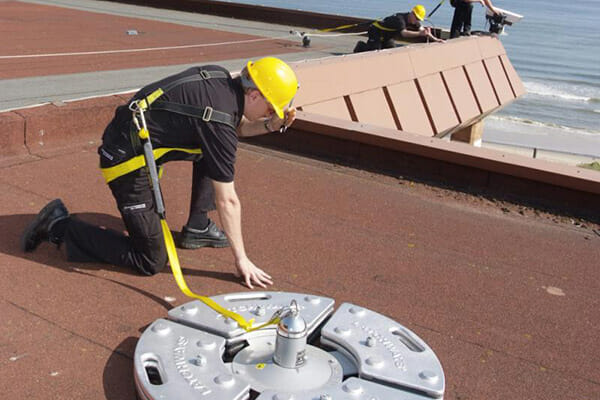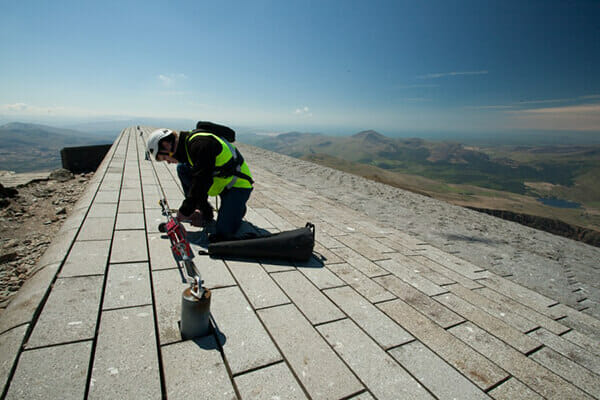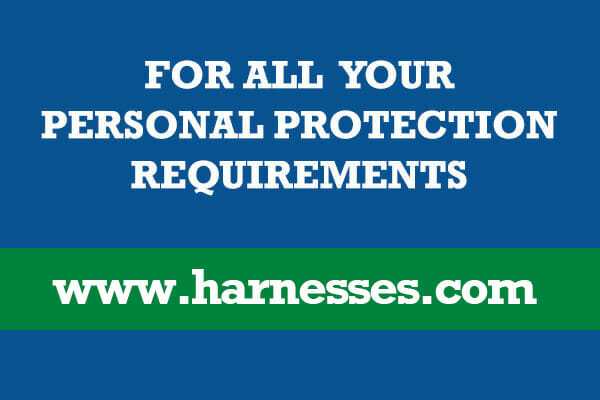Considerations When Designing a Fall Protection System.
Designing an effective fall protection system requires a thorough understanding of the task, the environment, the route of access, and the people carrying out the work. Every building is unique, and each access requirement brings its own challenges. A well-designed system must therefore consider a wide range of factors — from why access is required to how workers can reach the area safely.
1. Why Is Work at Height Required?
The design process begins with a fundamental question:
What is the purpose of accessing the area at height?
Typical reasons include:
- Gutter cleaning
- Plant and M&E equipment servicing
- Basic roof inspections
- Minor maintenance tasks
It is important to note that fall protection systems intended for routine access should not be used for major structural work or heavy construction activities.
2. How Will Safe Access Be Achieved?
Before designing the fall protection system, the safest method of reaching the work area must be established.
Preferred Method: Roof Access Hatch / Smoke Vent
This provides the most controlled and secure route into the roof space.
If a Hatch Is Not Feasible: Fixed External Ladder
-
Ladders over 2.5 metres require a fall protection line or hooped cage.
If Using a Portable Ladder
-
Ladder tie bolts or securing points should be installed to prevent movement or slippage.
Last Resort: Mobile Elevated Working Platform (MEWP)
If a MEWP is the only option:
-
A detailed method statement and risk assessment must be completed.
-
Operators must be trained and competent.
-
Additional hazards associated with MEWPs must be managed.
3. Defining the Purpose of the System.
Once the access route is confirmed, the designer must determine what the fall protection system is expected to achieve.
Example:
A common rooftop solution is a restraint-based continuous cable lifeline positioned around 2.3m from the roof edge. When used with a 1.8m lanyard, the worker cannot reach the fall hazard, eliminating fall risk and preventing suspension trauma.
4. Restraint vs. Fall Arrest — Selecting the Right Type.
Collective Protection (Preferred)
Handrails are the safest option because they:
- Require no specialist training
- Protect multiple users simultaneously
- Do not rely on PPE
- Allow unrestricted movement
Personal Protection (Cable-Based Systems)
Used where handrails are not feasible due to planning or space limitations.
Cable lifelines typically sit around 500mm above the roof surface, making them ideal for visually sensitive sites.
5. Critical Fall Arrest Clearance Requirements.
Where fall arrest (not restraint) is used, a minimum of ~6.75m of clearance below the user is typically required. This accounts for:
- Lanyard length (~2m)
- Free-fall distance (~2m)
- Energy absorber tear-out
- Safe post-arrest clearance
Without adequate clearance, the worker may strike the ground or an obstruction, rendering the system unsafe.
6. Rescue Planning & Suspension Trauma.
Every fall arrest system must include a dedicated rescue plan.
Suspension trauma can develop within 6–12 minutes, caused by restricted blood flow while suspended in a harness.
A rescue plan is not optional — it is a regulatory requirement.
7. User Experience & Practicality.
A good fall protection system should be:
- Simple to understand
- Easy and intuitive to connect to
- Non-restrictive
- Suitable for continuous hands-free movement
Users should be able to remain connected at all times, without disconnecting or managing complex equipment.
8. Engineering, Design & Global Expertise.
Our in-house engineers design custom systems based on your specific site needs, assessing:
- Dynamic and peak loads
- Structural capacity
- Fixing suitability
- Clearance distances
- Access routes
- User competence
Our team has contributed to major projects worldwide, including:
- Sydney Harbour Bridge
- Dublin Airport
- Wembley Stadium
- Numerous stadiums, towers, power stations, and industrial facilities
(And yes — the page owner once tried to skip the hour-long Sydney Harbour Bridge safety induction. It didn’t work.)
9. Why Choose Fallarrest.com?
With 25+ years of industry experience, Fallarrest.com provides end-to-end solutions:
- Design
- Installation
- Inspection
- Ongoing support
All delivered by qualified engineers and specialist installers worldwide.
Selecting the Correct Fall Protection System.
When designing a system, consider the following:
User & Usage Factors.
- Worker competency
- Training requirements
- Number of users
- Duration of system use
- Frequency of use
Building & Access Factors.
- Areas of the roof requiring access
- Fragile surfaces (roof lights, glazing, asbestos sheets)
- Roof pitch or slope
- Entry/exit points
- Required signage
Best Practice for Typical Users.
Many users have minimal experience with fall protection systems, including:
- School caretakers
- Facilities managers
- Commercial building managers
- Maintenance personnel
For this reason, simplicity and intuitive design are essential..
Efficiency and Safety
Systems should facilitate:
- Continuous hands-free movement
- Full mobility
- Zero unnecessary disconnection
Disconnecting from a system increases risk — well-designed systems prevent this entirely.
System Options for Any Roof.
Available systems include:
- Fixed top-fix posts
- Toggle anchors
- Non-penetrative weighted systems
- Guardrails
- Horizontal lifelines
We will recommend the safest and most compliant solution for your building.
How Legislation Is Strengthening Roof Safety?
Construction (Design & Management) Regulations – CDM
Employers must ensure workers are protected when working at height.
Equipment must be capable of safely arresting a fall.
HSE research shows that one-third of designers misunderstand their CDM duties.
Work at Height Regulations 2005
Applies to employers, the self-employed, and anyone controlling work at height.
A location is “at height” if a fall could injure someone — including below-ground areas like pits or drains.
Did You Know?
Horizontal lifelines must be:
- Designed
- Installed
- And used
Under the supervision of a qualified person, and must maintain a minimum safety factor of 2.
Do not take risks — always consult qualified professionals.





